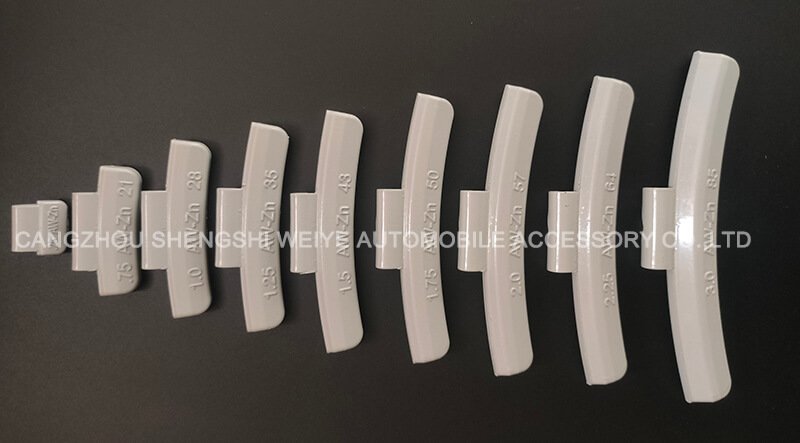Wheel Weights For Balancing Tires
Wheel balancing weights are weight components installed on wheels (including tires and hubs). Since tires and hubs cannot achieve an absolutely uniform distribution of mass during the manufacturing process, when the wheels rotate, the uneven mass will generate centrifugal force. According to the principles of physics, centrifugal force (where is mass, is the rotation radius, and is the angular velocity). When the wheels rotate at high speed, this unbalanced centrifugal force will cause vibration and noise when the vehicle is driving, and will increase the wear of components such as tires and vehicle suspension systems.
The function of wheel balancing weights is to balance the centrifugal force caused by uneven mass distribution by adding a certain mass of counterweight at the appropriate position of the wheel, so that the wheel can achieve dynamic balance when rotating, thereby reducing the vibration and noise of the vehicle when driving, and extending the service life of the tire and related parts of the vehicle.
Installation and testing process of wheel balancing weights
Testing the imbalance:
First, use a professional tire dynamic balancer to test the wheel. Install the wheel on the dynamic balancer, and the machine will use sensors to measure the imbalance of the wheel during rotation, including the location of the imbalance point and the size of the imbalance. The dynamic balancer usually displays the weight and position angle of the balance weight to be added in grams.
Choose the type and weight of wheel balancing weights:
Based on the results of the dynamic balancer test, choose the appropriate type (stick on wheel weight, clip on wheel weight) and weight of wheel balancing weights. If the imbalance is small, you may choose a lighter stick on wheel weight; if the imbalance is large, you may need to use a heavier clip on wheel weight.
Installing wheel balancing weights:
For stick on wheel weight, first clean the surface of the wheel hub to ensure that there is no impurities such as oil, dust, etc., and then stick the stick on wheel weight accurately on the edge of the wheel hub according to the position indicated by the dynamic balancer. For clip on wheel weights, align the hook with the slot on the edge of the wheel hub and install it securely.
Post-installation inspection:
After installing the wheel balancing weights, you need to use a dynamic balancing machine to inspect the wheel again to ensure that the wheel meets the dynamic balance requirements. If there is still an imbalance, you need to readjust the position of the wheel balancing weights or increase the weight of the balancing block until the wheel imbalance is within the allowable range.

